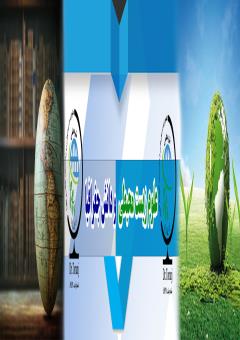Capacities of marine ecotourism in Qeshm Island
Subject Areas : Geography
1 - Hormozgan University
Keywords: Ecotourism, Qeshm Island, tourist attractions,
Abstract :
Ecotourism in Iran, as one of the five countries with the most climate diversity in the world and one of the biological reserves of the planet, has a relative advantage over other branches of tourism, Qeshm Island, which is in the east of the Persian Gulf and the With an area of 1500 square kilometers and a length of 136 kilometers, Hormoz is located as the largest island in Iran and also the largest island in the Persian Gulf, and has a wide range of ecotourism attractions such as the historical caves of Khorbes, salt domes, numerous wetlands and lakes, the ancient reservoir of Yipesht, the egg-laying beach of La Kapshethai Poze Aqabi located in the village of Shib Daraz, the beautiful geotourist attraction of the Sattar Haha valley and the Chahkoh valley, the ancient salt mines on the south coast of the island, the mangrove marine forests in 1% / wide 9 thousand hectares with biodiversity Above, according to the surveys carried out in the environment department, about 5% of the world's birds and 25% of Iran's native birds migrate to the mangrove forests, which is the world's first natural geopark, every year. Qeshm Island can be planned as one of the special tourism areas in the country due to its attractiveness and many platforms in the ecotourism sector. While introducing the tourist attractions of this island, this article aims to analyze the strengths and weaknesses, threats and opportunities in the field of tourism in the region, and the purpose of this article is to introduce the ecotourism capacities of this region, explain their importance, the need for conservation, planning and Invest in them. The research method of this article is a combination of descriptive and analytical methods and SWOT model has been used to achieve the research objective.
• رحماني، ب. (1375). بنيادهاي جغرافيايي اقتصاد ايران، سازمان چاپ و انتشارات وزارت فرهنگ و ارشاد اسلامي، صفحه: 44.
• سازمان جغرافیایی وزارت دفاع و پشتیبانی نیروهای مسلح(1382)، جغرافیای جزایر ایرانی خلیجفارس( قشم ، لارک، هرمز، هنگام)، تهران.
• محرابيان، ع. (1384). صنعت توريسم، چالشها و رهیافتها ، نشر کنگره.
• مخدوم، م. (1374). شالوده آمايش سرزمين، انتشارات دانشگاه تهران(چاپ دوم).
• مرکز آمار ایران، سرشماری عمومی نفوس و مسکن، شناسنامه آبادیهای کشور، شهرستان نوشهر، سرشماریهای 1385.
• هادي زنوز، ب. (1382). تجربه سیاستهای توسعه در ايران، مركز پژوهشهای مجلس شوراي اسلامي، صفحه: 102.
• يغمائيان، م. (1382). گردشگري در ايران، انتشارات مركز تحقيقات ميراث فرهنگي، صنایعدستی و گردشگري ايران، صفحه: 16.
• Buckly, R, (2001). Environmental impacts. In D. B Weaver (ed) the encyclopedia of ecotorism. Oxon, UK: CAB international, pp. 379-394.
• Ceballos-Lascurain, Htourism, (1996). economic and protected areas: the state of naturebased tourism around the world and guiedelines for its development. Gland and Cambridge: IUCN.
• Lauros.P, (1999). Encyclopedia of Science, Gotenborgen Press, vol.33, pp.209


